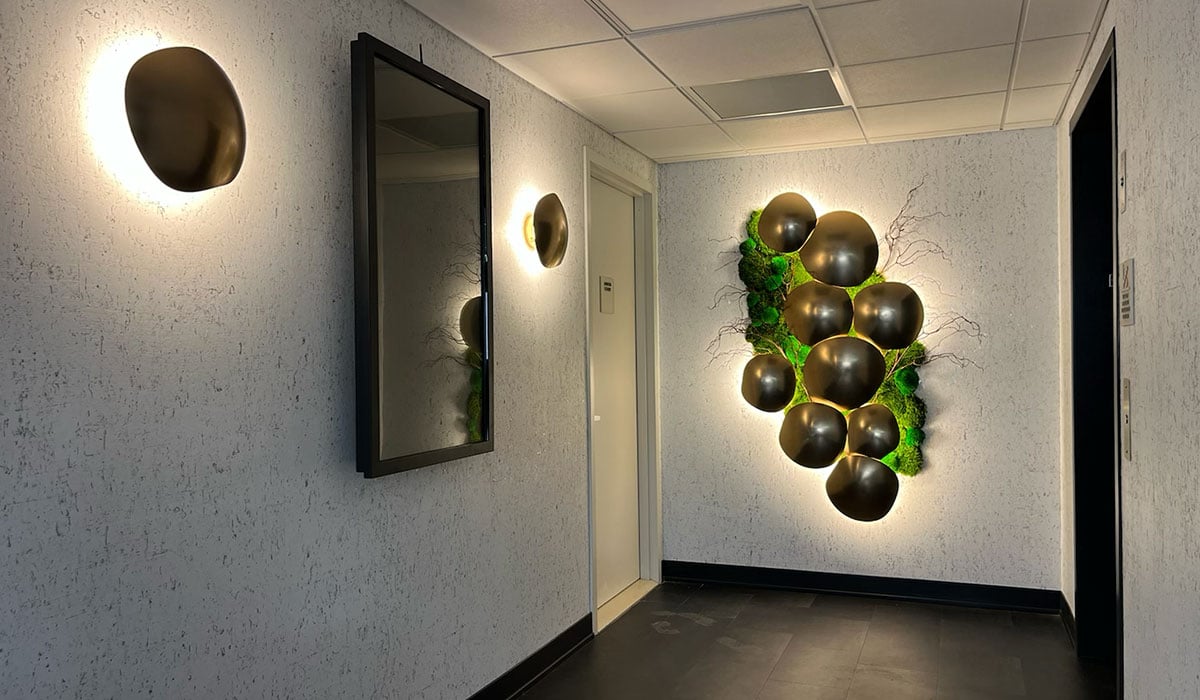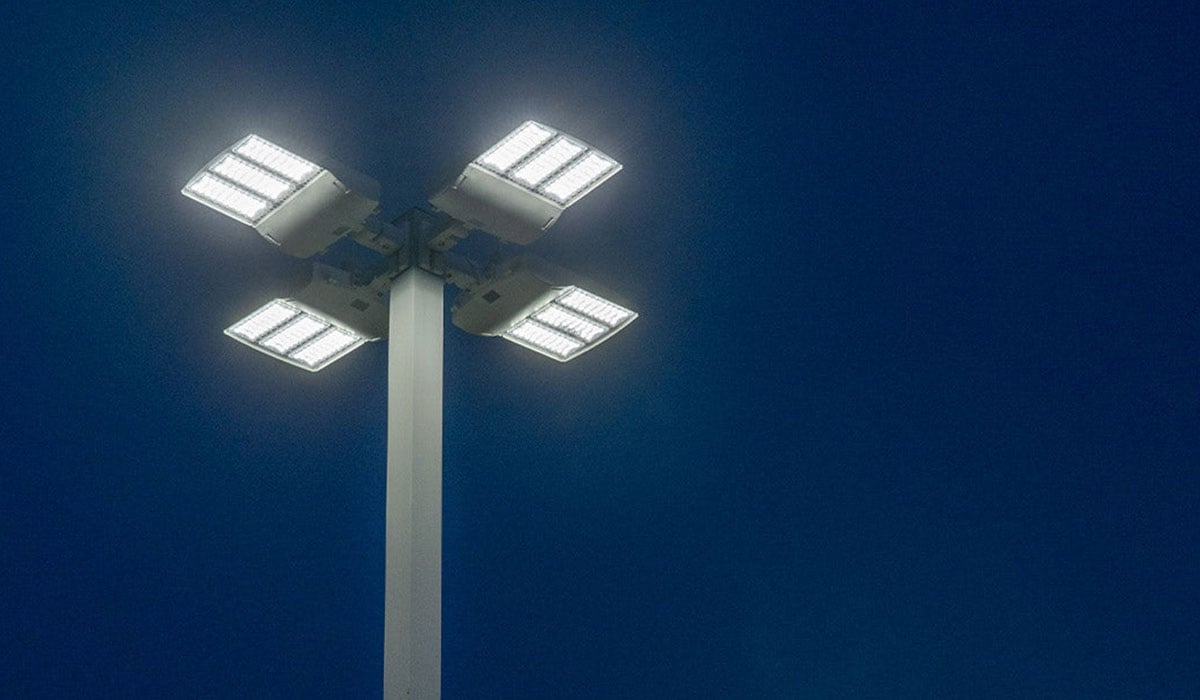Adequate lighting is essential for any commercial property—a critical component for creating a safe working environment, delineating exit strategies, and providing a productive atmosphere.
From day-to-day operations to emergency situations, companies should be able to rely on their lighting for consistent, uninterrupted, and non-hazardous operation.
However, a substantial amount of indoor and outdoor commercial lighting is antiquated—not only wasting money and energy, but creating numerous risks in the event of failure.
To ensure your property’s lighting is functioning optimally around the clock, it is best practice property managers upgrade to LED lighting and entrust industry experts to conduct inspections, installations, testing, and maintenance.
Doing so empowers property and business owners to not only spruce up their buildings with the latest in cutting-edge tech, but save money and foster a safe work environment.
Outdoor Lighting
From outline lighting to signage, outdoor lighting provides critical safety, security, and visibility for commercial properties—whether illuminating pathways and parking lots, or outlining features such as doors and windows.
However, it is also crucial for advertising your business: Outline lighting calls attention to sleek details, and vibrant signage commands attention of visitors and passersby—even from far distances.
That said, antiquated lighting attracts the opposite attention—giving an impression a building is run down, unattended, and more at risk of crime, injuries, and accidents that tend to occur in more poorly lit areas.
Luckily, several programs available at state, utilities, and municipality levels incentivize property owners to upgrade to light- and energy-saving options such as LED. These improvements enable managers to raise the foot-candles level (the amount of lumens per square foot), save money on electricity, and receive rebates.
“Switching to LED products is usually the way to go,” advises Double R President Rodney Ragen. “That's gonna save you the most money.”
Becoming increasingly common in street lights, parking garages, walkways, refrigerated cases, modular lighting, and more, LED lighting is a game-changing addition to commercial properties due to its longevity and reliability, according to an analysis from the U.S. Department of Energy (DOE).
Highly efficient, LEDs utilize 75% less energy, emit very little heat, and last up to 25 times longer than incandescent lighting. They also enemate in certain directions, and make dark sky compliance possible—projecting light at the ground instead of the sky, and mitigating light pollution.
In replacing aging systems with LEDs, property owners can ensure lighting is reliable, consistent, and efficient for a multitude of necessary purposes throughout the workday.
 Indoor Lighting
Indoor Lighting
Inside commercial buildings, a similar trend applies: Replacing indoor lighting with LEDs powers efficient lighting for a plethora of uses—from everyday workflow to exit signage and emergency lighting.
In fact, some building management systems (BMS) and energy management systems (EMS) further maximize efficiency by automatically monitoring and controlling a building’s lighting and energy use.
Additionally, occupancy sensors react to movement in a given area and automatically light a room upon entrance, so you only use the energy and power needed.
“Basically, say you have a store and there's a front window. The ambient light you're receiving from the sun, you have photo cells inside the building,” explains Ragen. “As it gets brighter outside, that ramps down the lighting on the inside of the building—again, to save you money. It's actually part of the building computations now when we do energy management.”
Similar to outdoor lighting, numerous programs also incentivize property managers to update antiquated lighting—saving money on maintenance and electricity, and yielding a better product and lighting system, overall.
Infrared Scanning
Not only is it best practice that property and business owners update to LEDs, but it is perhaps equally crucial to keep up with regularly scheduled inspections and maintenance.
Forward-looking infrared (FLIR) cameras enable contractors to take photos detecting the thermal activity of panels within a system—revealing any energy waste.
“Your conductors are rated for anywhere from 60 to 90 degrees Fahrenheit,” Ragen explains. “When you scan this, it gives you the temperature of everything in there. If you have a loose connection, an overloaded circuit, bad circuit breaker, or bad connection with the circuit breaker to the panelboard, it'll show up in heat. Heat is where you lose power.”
The key to these routine inspections—which businesses can have performed quarterly, semi-annually, or annually—is proactivity.
Infrared scanning highlights issues needing to be addressed as they occur—not when they contribute to fire hazards or other risks.
In the process, contractors torque and inspect switchgears, panelboards, safety switches and circuit breakers, and monitor for any wires that have loosened, Ragen adds.
“Wires have resilience to them so when they heat up, they expand, and then when they cool down they contract,” he explains. “So that's why we torque them to a certain amount of foot pounds that are recommended and inspected and checked.”
“Certain conductors are more resilient than others, like copper is more resilient than aluminum,” continues Ragen. “If you have aluminum conductors, they need more attention than copper conductors. So, older electrical systems that utilize aluminum conductors need more attention, as well, and should be checked out.”
Lighting Safety Considerations
Whether replacing antiquated lighting or maintaining systems with diligent maintenance and inspection, there are a number of safety factors property managers should consider, including but not limited to the following:
- Accidents & Falls: Indoor and outdoor, lighting failure can lead to a number of accidents, including slips, falls, parking lot collisions, and more—preventable by illuminating stairways, walkways, parking lots, and the remainder of commercial properties with reliable, compliant lighting.
- Fire Hazards: When aging wiring and lighting become overloaded and overheat, this can pose a significant fire hazard. Property managers should conduct routine infrared scanning and inspection, and implement proactive recommendations from a licensed contractor.
- Discomfort & Lost Productivity: Amid poor workplace lighting, staff is more prone to poor vision, squinting, and headaches—all discomforts that affect quality of work, fuel mistakes, and compromise overall productivity.
- Crime: Increased lighting levels also reduce "index crimes" (serious felonies such as robbery, aggravated assault, murder, and certain property crimes) by 36%, reads a 2019 study from Crime Lab New York, which is part of the University of Chicago’s Crime Lab and partners with civic and community leaders to reduce crime in New York City.
- Faulty Emergency Lighting & Exit Signs: In the event of an emergency, exit signs and emergency lighting is vital for rousing staff and delineating a clear path to safety. If these crucial OSHA and Life Safety Code requirements fail or are not properly installed, businesses not only face fines, but create an unsafe environment that puts lives at risk.
- Wasted Money & Poor Energy Efficiency: If properties have aging systems, infrared scans will highlight any wasted energy as heat—and by extension, wasted money. Cooler and longer lasting than incandescent bulbs, according to the Department of Energy (DOE), LEDs waste less energy and save more money in the long run.
Double R: Your Commercial Lighting Solution
To ensure cost savings, efficiency, and reliability, it is prudent business owners invest in the longevity of their indoor and outdoor lighting, and take preventative measures to inspect, test, and maintain systems.
When selecting the right team for the job, property managers should also consider trusted contractors with ample experience, skills, and certifications.
With more than three decades of expertise throughout Long Island, Queens, New York City, and Westchester, Double R’s team of professionals possess the licensure and specializations to meet your organization's unique needs.
Whether installing a building management system, repairing existing circuits or lighting poles, upgrading to energy-saving options, or implementing photo cells and timers, our one-stop shop provides the installations, inspections, testing, and maintenance necessary to get the job done, right.
“These are all options to help save money and have your lighting properly illuminating your facility,” shares Ragen. “A lot of times you're saving money by not repairing what's there. So besides saving energy, you save the maintenance and repair and downtime, which is a big, big thing with certain industries.”
To optimize your lighting with the latest advancements, trust the unmatched quality and reliability of Double R to help you save money, ensure compliance, and create a safe working environment.
Double R is a preeminent leader in installation, maintenance, testing, and inspection for your property’s electrical and security needs. From lighting and electrical wiring to cellular alarm monitoring and carbon monoxide detectors, our one-stop shop of certified specialists ensure your systems are compliant, operational, and functioning optimally—especially when you need them most. Contact us today to learn more.


